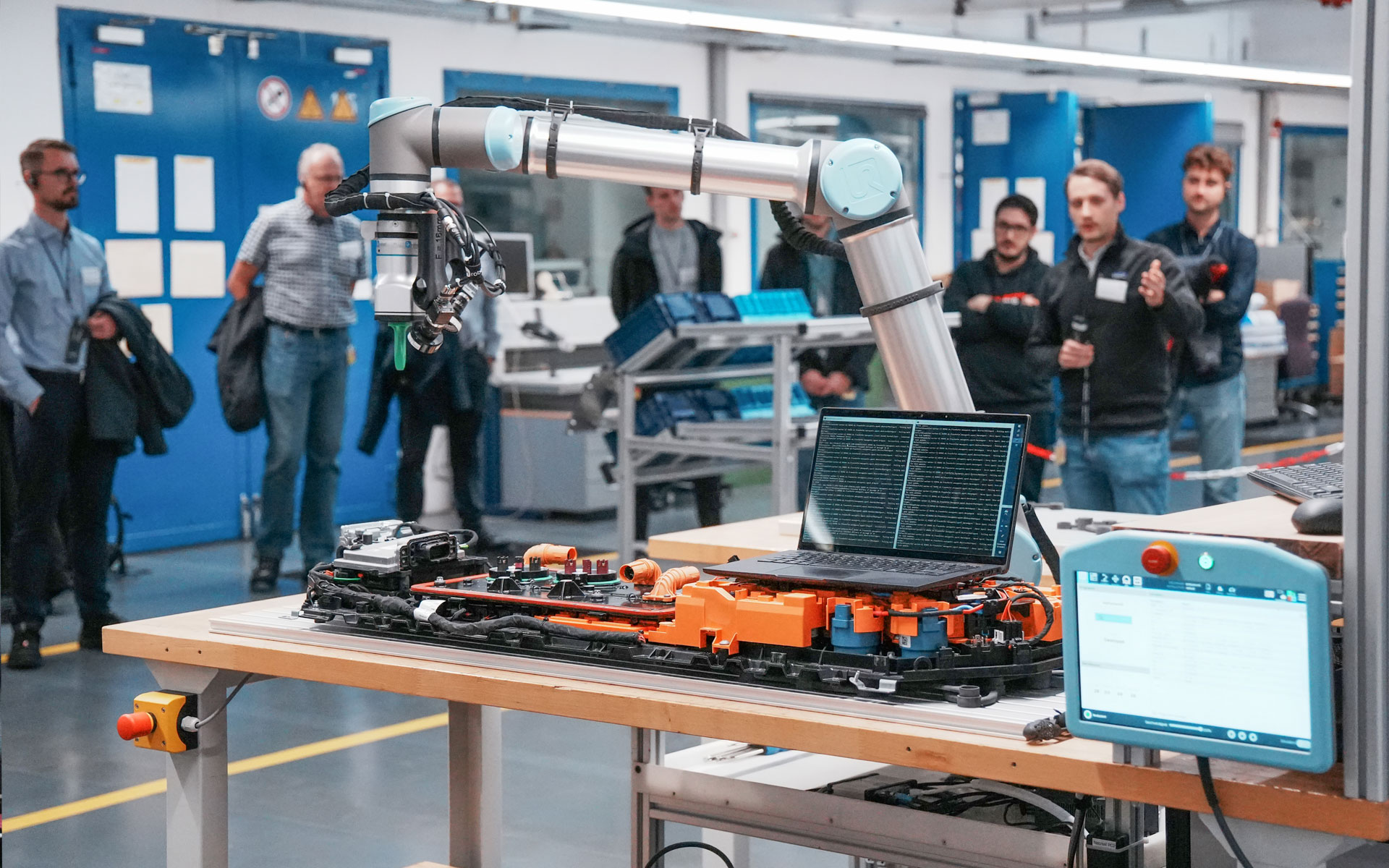Business models for biological transformation
How can existing business models be improved and what effects do adaptations have? Business model patterns taken from the technological sub-projects, the bioeconomy and the circular economy, form the basis of a catalog of options for optimization.
Smart recycling of valuable materials
Intelligent image recognition determines the type and quantity of disposed products. Optimal logistics and processing strategies for each product are suggested based on this, their effective implementation is supported and warnings about potential sources of danger are generated.
Engineering of biologically transformed products
Digital twins of physical products and integrated databases enable real-time life cycle assessment throughout the product life cycle. The integration of planning and real data supports monitoring environmental impacts and optimizations in product design.
Bionic integration for networked production systems
The interactive situational awareness cockpit supports the management of holistic production systems and serves as a crisis management tool. An environment analysis makes changes visible at an early stage. The situational awareness cockpit helps to identify alternatives.
Ecologically intelligent services for production
A multi-agent system for the decentralized control of production processes maps all actors (such as people and machines) as software agents. These can react dynamically to disruptions and organize production processes autonomously.
Biointelligent worker assistance systems
A vest with sensors records the posture of workers and detects forced postures at assembly workstations, for example. A comparison with ergonomically ideal standards forms the basis for the targeted optimization of working conditions.
Additive manufacturing with biogenic and degradable polymers
A biodegradable plastic is produced by converting waste fats into biogenic polymers in a fermentation process that involves microorganisms. These are further processed into 3D printing granulate for the additive manufacturing of components.
 Fraunhofer Institute for Production Systems and Design Technology
Fraunhofer Institute for Production Systems and Design Technology